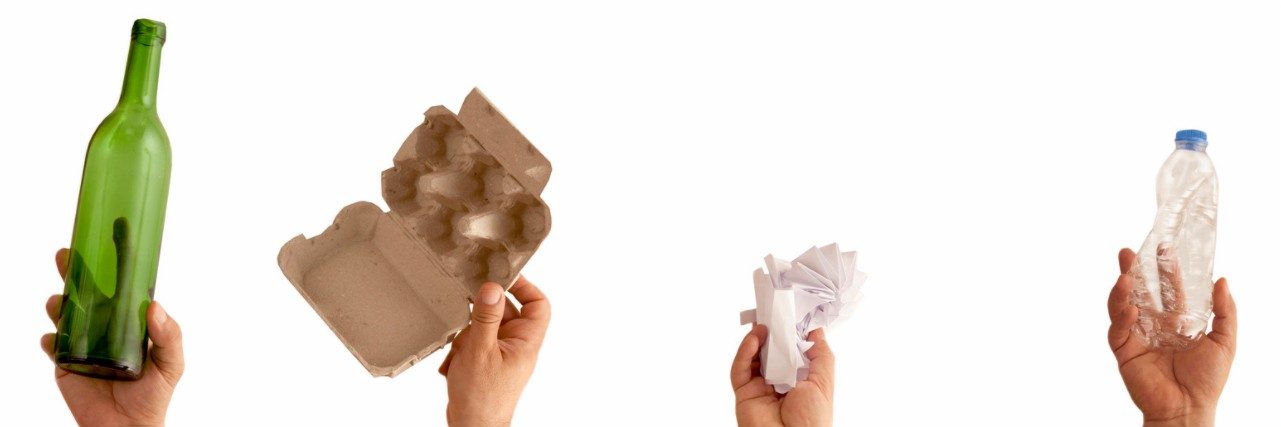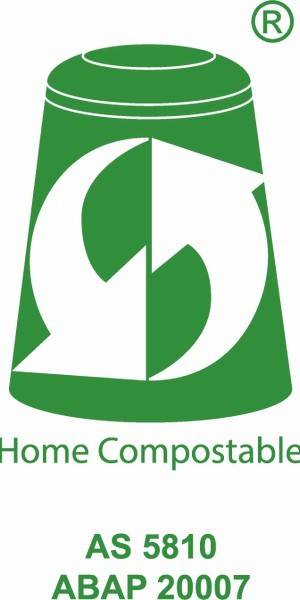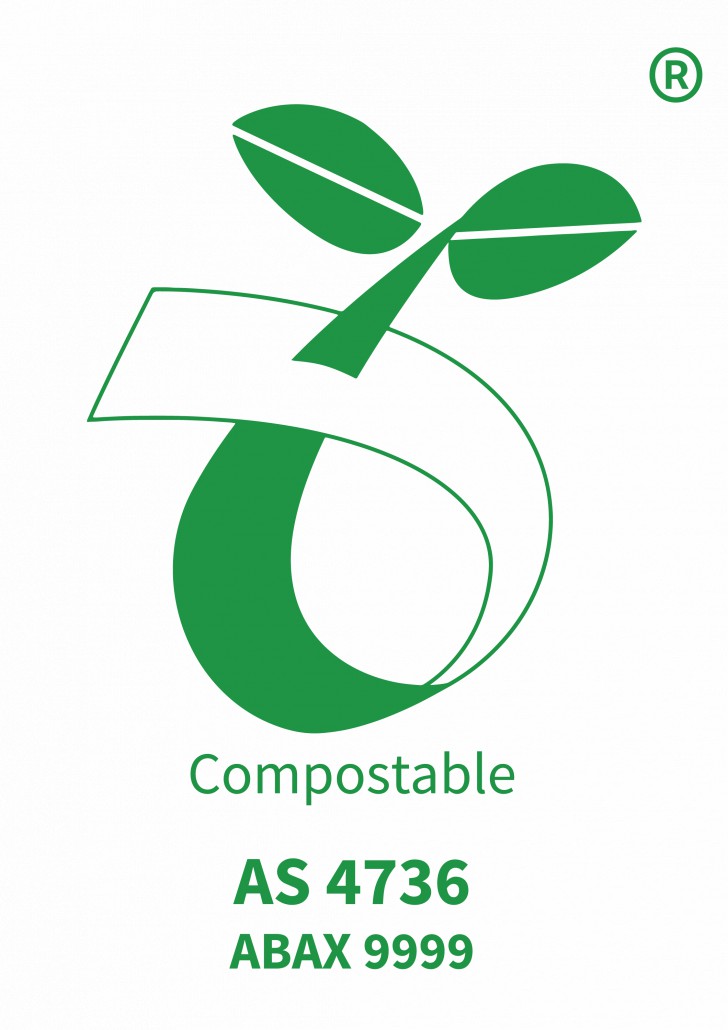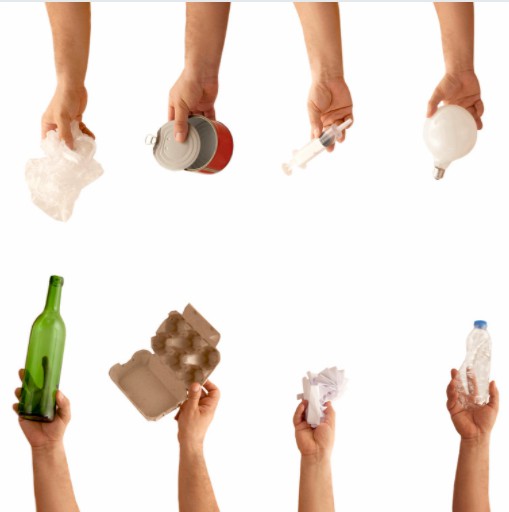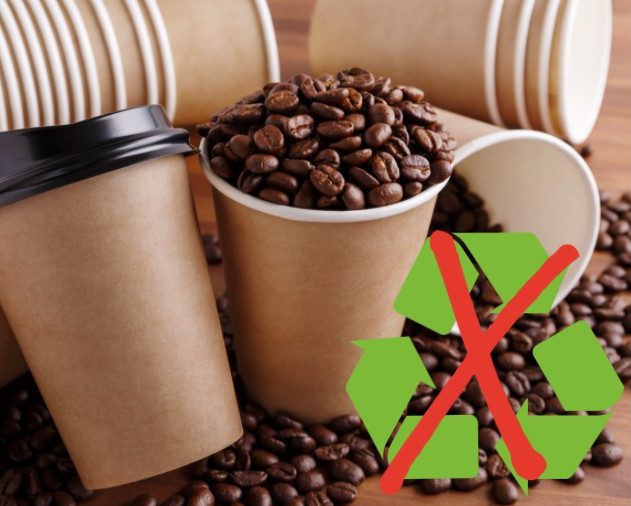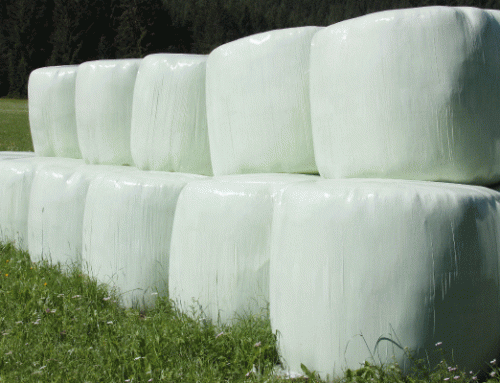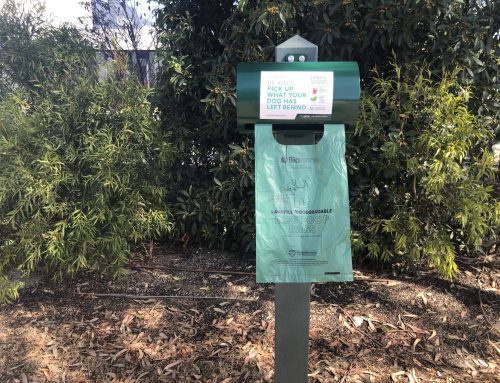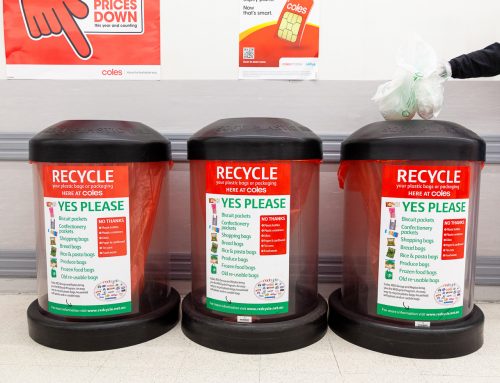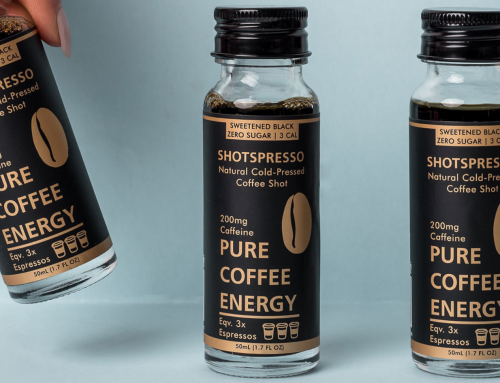According to the Department of Agriculture, Water, and the Environment 84% of plastic currently used in Australia is sent to landfill and only 13% is recycled.
With all the challenges surrounding recycling, there is a growing interest in opting for other environmentally friendly ways of disposing plastics – one of them being composting.
So the big question is, is it better to compost or recycle?
The answer isn’t so black and white, and we’ll explore why.
Composting
Home vs commercial composting – what’s the difference?
An important aspect to consider when we’re talking about whether it’s better to compost or recycle is whether we’re talking about home vs commercial compostable packaging.
Home composting involves using a compost pile to help break down materials over several weeks and months. This can be done in your backyard, where you can reuse the compost as fertiliser for your garden and soil. However, not everyone has access to a backyard or the willingness to actively compost their waste. Home composting may not be convenient or the first choice for many consumers – especially if they’re leading busy lives or reside in small apartments with limited outdoor space or not connected to a community garden.
Commercial composting on the other hand can only happen in a controlled commercial facility with specific environmental controls regarding temperature, oxygen levels, and more. Commercially compostable products need to be dropped off at a commercial composting facility, as they require a certain environment to break down – hence, they won’t degrade naturally in a home compost or elsewhere.
What can you put in your compost bin?
Some examples of what you can put in your home compost bin include
- fruits and vegetables
- eggshells
- shredded newspaper
- Paper towel
- cardboard
- tea leaves
- coffee grounds
- hair and fur
- house plants
- grass clippings or trees
- nut shells
Below are some items that aren’t compostable:
- charcoal
- fish scraps
- dairy products
- meat
- fatty or oily food
- pet waste such as pet poop or waste
If your compost has the space and is used regularly with the right temperatures you could compost home compostable products or packaging – look out for this icon on packaging!
Whilst all home compostable products are themselves home compostable, their contents may not be. Make sure that the contents of your home compostable product are also home compostable and if they are not, dispose of everything to a general waste bin (destined for landfill) where the home compostable bag will still completely biodegrade. For example our home compostable dog poop bags or bin liners.
For commercially compostable products, you should be able to find the label stating that the product is commercially compostable – look out for this icon on packaging.
If you are unsure, it’s best to contact the brand or manufacturer. As mentioned above, commercially compostable goods need to be collected and taken to a commercial composting facility to fully break down. There are very few commercial compost facilities in Australia, making it hard and very unlikely that a commercially compostable plastic will be able to biodegrade.
Recycling
How much of recyclable waste actually ends up in landfill?
As mentioned at the beginning of this article, a large portion of our recyclable waste doesn’t get recycled and ends up in landfills. The plastic that is recycled often gets:
- Downcycled and made into basic items like outdoor furniture and fencing.
- Plastic can only be recycled 2-3 times. After that its structure and properties become damaged and need to be disposed of. Only delaying the plastic ending up in landfill by 1-2 years.
What can you put in your recycling bin?
Before you go ahead and place ‘recyclable’ products in your recycling bin, there are a few things you should be aware of to ensure the best chances of your waste getting recycled.
Before disposal, recycled goods should:
- Be washed, clean and dry (as residue will contaminate and impact the item, surrounding items and the recycling process)
- Be removed of any packaging materials that aren’t recyclable such as polystyrene from a cardboard box. Always check all materials on the product are recyclable before disposal and if unsure check with your local council. To help with disposal there are the new ARL labels on supermarket packaging.
With the above in mind, below are a list of items that can go into the recycling bin:
- Plastic bottles and containers (marked with the recycling symbol 1-5)
- Aluminium cans
- Aluminum (scrunched into a ball)
- Metal lids
- Milk and juice bottles
- Glass bottles
- Cardboard (not waxed and flattened)
- Paper
- Toilet roll and tissue boxes
- Pizza boxes (clean only – not oily)
Below is a list of items that can’t go in the recycling bin:
- Soft plastics and plastic bags
- Plastic with the recycling symbol 6 & 7
- Black plastics (meat trays made of plastic or foam)
- Polystyrene
- Milk and juice cartons (including Tetra Paks)
- Coffee cups and lids
- Paper Towel
- Garbage waste
- Food or garden waste
- Clothing, textiles and linen
- Batteries
- Electrical equipment (e-waste)
- Broken glass and mirrors
- Waxed cardboard
Answering the big question – is it better to compost or recycle?
When done properly, both composting and recycling are better for the environment compared to simply disposing of waste into landfills.
However the key takeaways are as follows:
- Home composting is ideal for those who have access to a backyard to create a compost, and also have the willingness to actively carry out composting at home – without any issues of space.
- Commercial composting is only ideal for those who have the infrastructure in place to take their goods to their local commercial composting facility. If not, such goods need to be disposed of to a general waste bin.
- Recycling is ideal and when done properly. It means resources can be recovered and made into new items. However with such strict measures on how to properly recycle and with an incredibly low rate of national recycling happening in Australia to date, consumers have to be very vigilant and careful about recycling their goods properly and ensuring that they are in fact fully recyclable. If unsure, always dispose in the general waste bin to reduce recycling contamination.
For the above reasons, we believe that a lot more can be done to make recycling and composting more accommodating to consumers – and in the end, effective in making a cleaner and healthier earth.
Wherever possible, we highly encourage everyone to recycle and compost where they can, however we all know this can’t always be done. In such cases, we believe that our landfill-biodegradable products at Biogone can offer a convenient solution for consumers, compared to using traditional plastics that can take hundreds of years to break down. We also offer a range of home compostable products as an additional alternative.
For more information about our landfill-biodegradable technology,visit our FAQs page or get in touch with our team today.

